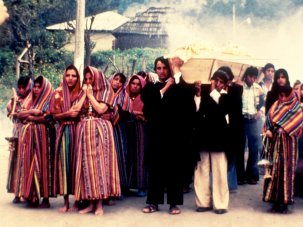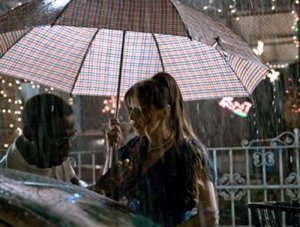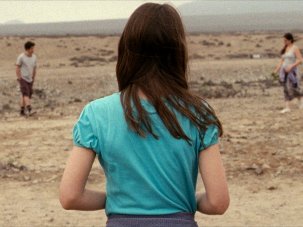Web exclusive

Best Mexican Feature El Premio (2011)
I’m sitting in a cheap, empty tacos bar in Mexico City. It’s late at night. Distant music thuds and I’m drinking Mexican wine. There’s a touch of film noir about this moment. If only I were wearing a trench coat like Robert Mitchum in Out of the Past; if only Jane Greer would walk in, back lit.
Morelia International Film Festival
Morelia, Mexico | October 2011
My mind flashes back to what just happened. I spent a week in a city with razor-sharp sunlight and shadows – Morelia – at its ninth film festival, which had invited me to join the Mexican Feature Film jury and to show a 100-minute extract of my movie The Story of Film: An Odyssey.
In good writing the theme creeps up on you; but here, after two glasses, I’ll just say it like Walter Neff might say it: the Morelia festival this year was, for those in the mood, a struggle between maximalism and minimalism, like Carmen Miranda and Robert Bresson in an arm wrestle.
The films themselves were firmly in the Bressonian less-is-more camp. At the start of the new millennium, in films like Japón and Battle in Heaven, Carlos Reygadas dared to stare with Bressonian blankness (as if in reaction to the Mexican tradition of melodrama and telenovella) at socially divided, pious, beautiful Mexico, a nation looking forward to the moment when its politics might eventually come good. And before him, in the 1970s and 80s, Mexican director Paul Leduc had used a spare filmic palette too. Seven of the nine new Mexican features in Morelia by first- and second-time directors seem to agree that the inscrutable stare works.
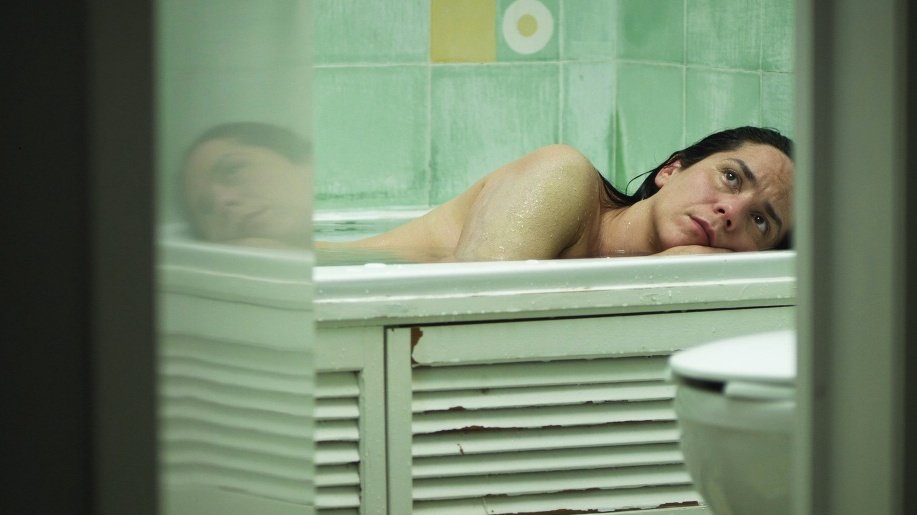
El sueño de Lu (2012)
It does. The films were very good. So much so that we gave three honourable mentions. The first, El sueño de Lu (The Dream of Lu), directed by Hari Sama and starring Ursula Pruneda, is as moving as cinema gets.
Pruneda plays a young mother whose son has died and who is paralysed by grief. She joins a (beautifully depicted) bereavement-support group but, if anything, her pain gets worse. Sparked by a tragic event in the lives of Sama and Pruneda, the film is full of agonising blankness rather than the expressive palette and focal lengths of, say, the great grief movie Three Colours Blue, but the affect is on the same scale. The Dream of Lu should be widely shown.
Our second special mention, Michel Lipkes’s Malaventura, was even more spare. An old man wanders round the seedy parts of downtown Mexico City (where I’m writing this). Like an aging Travis Bickle, he goes to a porno cinema and tries to make a painful phone call, and seems to walk to stave off his depression. Lipkes’s opening long take of the man waking up is as bleak and beautiful as Béla Tarr’s images, and his last shot of a disabled guy dragging himself past a church reminded me of Luis Buñuel’s Los Olvidados. A jet black film noir, Malaventura suggests that Lipkes could become a master director. His film could be retitled in English The Old and the Damned.
Most of the other films were also aesthetically steely, but our third special mention, Fecha de caducidad (Expiration Date), bucked the trend in that it was a funny, Almodóvarian tale of an old lady whose son is decapitated. Like Almodóvar’s women, director Kenya Marquez’s characters are such nosy Parkers that their intrigue about the death soon outstrips grief or morality. Marquez always seems to know where to put her camera and there’s a Coensy crispness and characterisation – lots of gormlessness here – which makes her film both entertaining and cinematic.
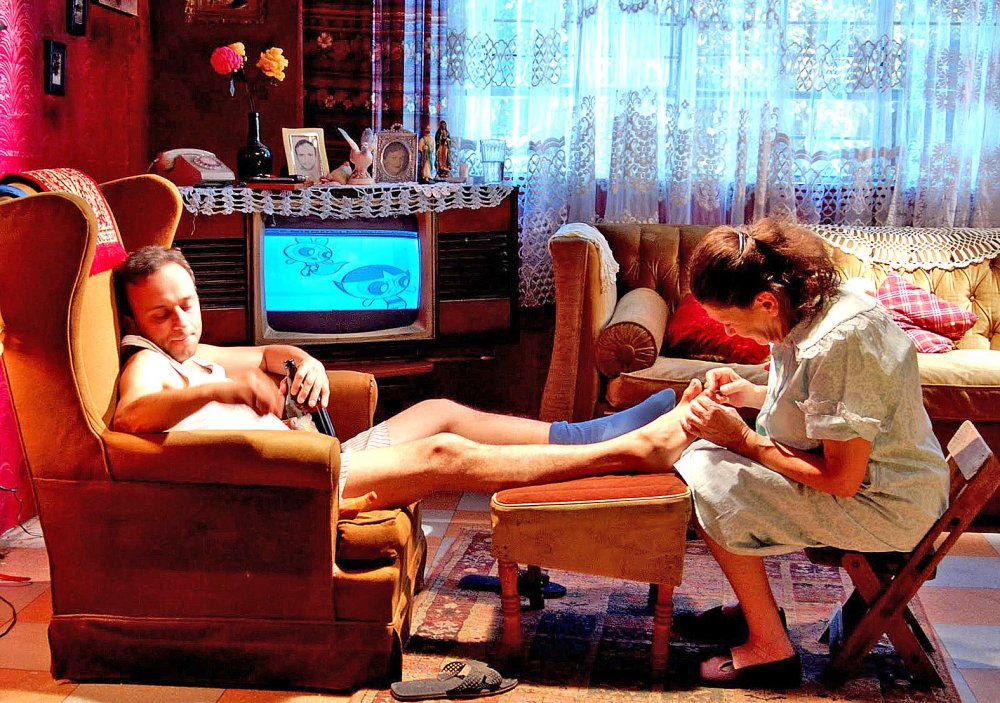
Fecha de caducidad (2012)
Our top prize went to Argentinian born, Mexico-resident director Paula Markovich’s extraordinary El Premio (The Prize). Markovich has shortened her film since Berlin, where it won the Silver Bear for technique, and seems to have removed the ending which rankled some critics there.
Nearly all the new Mexican films we saw were about parent-child relationships (only Malaventura had any sex), and Markovich’s film followed suit. Her seven-year-old actor Sharon Hertzog is as convincing as the kids in Kiarostami’s films. She lives with her fearful mum in a beach hut. The child plays like any kid, but mum is waiting for something awful to happen – for the authorities to find her just like they found her husband.
At school, the daughter is asked to write an essay on the country’s military regime and – out of the mouths of babes – she says it is murderous. This makes her mother even more scared for their lives. Markovich seems to have had in mind her own childhood in 1970s Argentina, and she’s clearly brilliant with actors, but combine the acting with gorgeous digital widescreen photography by Wojciech Staron – daringly graded to remove all blacks as if the negative had been fogged – and with a script which slips in lines like “the sea is crazy and the waves have many sisters” and you get intimate and visually memorable. The constant wind that drives the mother almost to distraction reminded me of Victor Sjöström’s 1928 The Wind.
Minimal in another, less heartening way was the respect that journalists in Morelia accorded the press screenings. Many arrived 15 minutes or more late, thereby missing key story points, and they texted and made phone calls throughout the movies. During the screening of Malaventura, a Variety reviewer had a loud altercation with a Mexican journalist because he was using his phone. The complex Mexican art cinema which Morelia rightly selected needs a press corp that engages with it more.
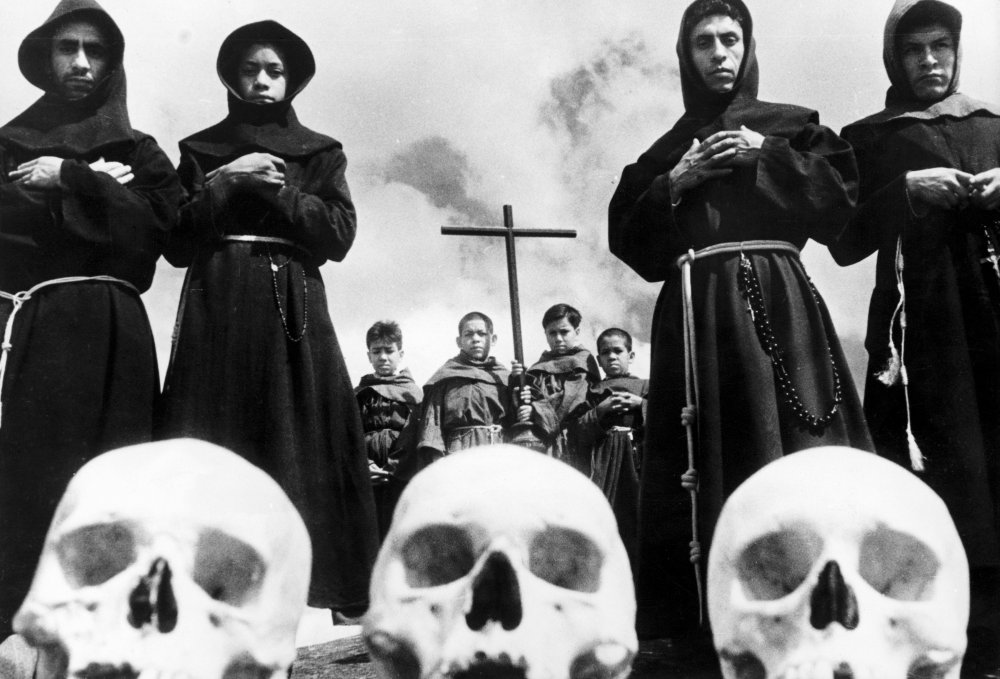
Que Viva Mexico! (1932)
Was Sigmund Freud the first to talk about rendering a thing through its opposite? The emotional austerity of the films contrasted strongly with Morelia’s extraordinary hospitality and welcome. And certainly the less-is-more restraint of the Mexican films in Morelia this year brought to mind the more-is-more dramatic expressivity in Mexican life. With perfect timing the Vatican paraded a wax effigy of the body of Pope John Paul II on a catafalque during the film festival, carrying a phial of his real blood at dusk, fireworks going off to a constant drum beat. The streets were lined with cheering people (mostly women) filming his Holiness on their mobile phones.
The Baroque, of course, was the Roman Catholic house style ditched by the reformation in favour of blank walls and minimal decor – Bresson avant la letter. It’s hard not to read the scrubbed-clean style of new Mexican art cinema as a region-wide rejection of the eyes-heavenward, warm-hearted emotionalism of aspects of Catholic life (a life I was brought up in and enjoyed). The festival attendees said that the pope parade was weird, and they were right. We scurried back to our cinemas to see more contemplation and less sensation.
But lest we conclude that Mexican filmmakers will be in permanent rebellion against the Mexican baroque, it’s worth noting that the most notable director to visit the country after Luis Buñuel found the trip made him turn the decor dial up, not down. Sergei Eisenstein spent little over a year here, but at a time in his life when vestiges of realism were being replaced by a new interest in excess.
In her recent book In Excess: Sergei Eisenstein’s Mexico, Masha Salazkina connects Eisenstein’s Mexican phase, where he was impressed by Churrigueresque churches, with the idea of ecstasy, ex-stasis, out of stasis. The pieced-together version of Eisenstein and Grigori Alexandrov’s Que Viva Mexico! (1932) that is introduced by Alexandrov is compositionally rich and full of love and death – a truly baroque film. But I can’t help feeling that it would have been better if one of the new breed of young Mexican directors had cut it, thus bringing their astringent scepticism to Eisenstein’s ardent maximalism. It’s the struggle between the two that makes Mexican cinema so exciting.




